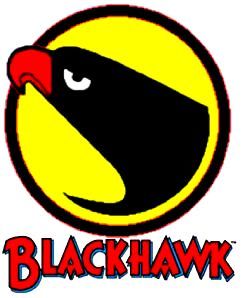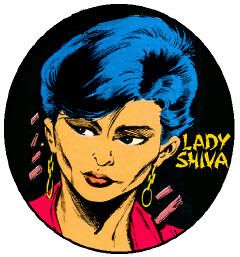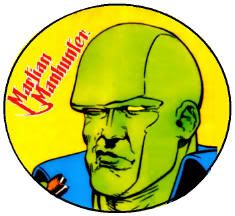Sunday, March 31, 2024
Comic Reader Résumé: Late April, 1986
Are you as sick as I am of hearing me talk about flipping through issues of Daredevil during the "Born Again" arc, but never buying them because the storytelling looked too dense? I promise that #233 is the last time, with the added bonus of my refusing to support an all-timer Captain America guest spot. Next month is an all fill-in issue, where Mark Gruenwald inflicts Madcap upon us, and Marvel inflicts Klaus Janson upon Steve Ditko. If that doesn't sound like it would work, your hearing's fine. The following month, they tried it with Danny Bulandi, with far more interesting results. It's still anachronistic, like the Curt Swan/Dave Hunt pairing on Superman, although Bulandi is much more heavy-handed in burying Ditko under his style. But I like Bulandi, so I don't hate it. Then Ann Nocenti debuted, and continuing her artist hot streak, was joined for the one issue by freakin' Barry Windsor-Smith. That was also the month of the Marvel 25th anniversary cover, with a fun head shot and that iconic character-filled border. Louis Williams then started his Daredevil run without Nocenti, on a fill-in story by someone named John Harkness. Smells fishy to me. Klaw was in this one, and I'd had my fill of him during Secret Wars. I mention all this because my anticipation to start buying Daredevil continued to be deferred throughout this time, so I figured to address them in one rip.
Another bulk rate bonus entry is Meet Misty #5, wherein I stopped buying a six-issue mini-series one issue shy, but will finally seal the deal nearly forty years later. So the first thing I have to investigate is what went wrong with issue five? The cover featuring Darlene Dunderbeck and Misty Collins at the gym may be an indication. I was never much for P.E., I find Darlene to be a dull adversary, and Misty is oddly sexualized here and throughout the issue. Look, I'm not a prude and I don't think women's existences are inherently sexual or anything. I mean that three pages of the seven page opener features teenage girls in a locker room in states of undress, starting with a splash featuring an unnamed kid pulling up her dress to just below the breast line. Plus, the entire piece is a comedy of errors with Misty and Darlene obsessing over their weight. Also, it precedes a Milly the Model four pager about a middle aged, overweight woman reflecting on her past, so it feels like overcompensating. That was cute at least, and was a slight nod to the character's mid-century comics continuity. The last story, "Video Wars," goes full Muppet Babies. The girls go to a stand-in for Chuck E. Cheese Pizza, where Darlene challenges Misty to a video game, and she gets lost in a Star Wars pastiche fantasy. Technically, Shirelle and Spike are in this comic, but they have nothing to do in the story but support Misty. The issue was all the things that I didn't like about the series to date, with little of what I had.
It gets worse in the finale. I know Meet Misty #6 was on the stands at 7-11, as usual. I picked it up and tossed through it. Sometimes, there's just another comic that you want more, and you leave one behind for a week or so. My strongest memory of that was Kitty Pryde & Wolverine #1, which just didn't quite make it home on the first pass, sold out or got pulled, and I made sure to buy #2-6. This was the exact opposite. I was five-sixths through this thing, felt like I ought to finish, but just didn't want to. It's very possible that its centering on a wedding hurt it. I'm not married, and would rather never be so, but I fully invested in the wedding of Peter Parker to Mary Jane Watson. Looking at the long lead story, and it's just Darlene pitted against Misty again. I was sure tired of that. As usual, the object of their affections and dispute is soap opera co-star Ricky Martin, who ultimately marries his old flame Lake Lovelock's character in-show. However, Ricky doesn't have a line of dialogue in these later issues, although you could argue fair play, given he's just a prop to pit Darlene against Misty throughout the series. Because there have been celebrity designer credits in these comics, I made a point to start reading those, like I would have as a kid. There's a very good chance that the Bill Walko who went on to do Teen Titans comics in a animation style got his start here, but more of a long shot is Rob Schneider of Deuce Bigolow Male Giggolo infamy submitting outfit designs. But I read dozens of these credits between issues, each with multiple fashion montage sequences. Knowing the end was near, I think Trina Robbins wrote her stories around featuring as many of the submissions as possible, and it leads to exceptionally insubstantial material. The final full story is Misty buying a Mary Marvel indebted outfit at the mall, gaining super powers, but losing them when the colors wash out in the laundry. She tries to replace it, but that shop at the mall supposedly never existed, even though Misty and Shirelle had both shopped there. The New Mutants comic is repeatedly and obtrusively referenced, to the point where it feels like Robbins is trying to mainfest continued life for her heroine in the Marvel Universe. It isn't even convincingly framed as a fantasy sequence, because multiple characters see and respond to "Mall Girl" flying around and using super strength, even one from outside the regular cast who goes home to tell her husband about a thwarted mugging. It's feels so odd and desperate. Speaking of, the final single page gag strip stars Darlene and hinges on a poodle skirt gag. It's 1986. I bought too many Misty issues, not one too few. And the junior Miss Collins never appears again, outside reference material. Milly did, but in appearances that clearly ignored this Star Comic as outside of Marvel continuity.
Last Days of the Justice Society Special #1 was another one from my buddy's grocery sack o' comics in the summer of '88, though I did eventually buy my own copy a decade or so down the line. Part of the reason Roy Thomas left Marvel for DC was to get the chance to write the Golden Age heroes he'd grown up with, and DC made him bury them. As a consequence of Crisis on Infinite Earths, DC wanted all the old timers off the board. A few of them had already been killed off in the event, so the book starts at their funeral. Then the Spectre showed up to explain that he and the universe itself were dying, as he'd come from a near future resolution of World War II where the JSA were all gunned down by Nazis. So the team does a redux, and this time they're all killed by Norse Gods summoned by the Spear of Destiny. I realize Hitler had a fascination with the supernatural, and used the Norse as a way to provide a Teutonic mythology for his regime. What I don't get is what the spear that pierced the side of Christ on the Cross has to do with Asgard, and this wasn't Thomas' doing, but I also thought it was dopey that the power of the Spear of Destiny was what prevented the JSA from invading Germany to end the war sooner. I guess this special helps to illustrate that point, but it has the unfortunate side effect of demonstrating Adolph Hitler besting America's super-heroes twice over and seemingly unto infinity. You see, the whole premise hinges on the Twilight of the Gods, the Norse myth of the end times. In fact, I was introduced to the concept of Ragnarok by this comic. Anyway, rather than bringing the Norse apocalypse, the JSA are able to cause Ragnarok to perpetually reset, rather than progress to engulfing the Earth, or even all of existence. It was a real downer ending, and the combination of Dave Ross and Mike Gustovich brought an old-timey newspaper strip verisimilitude that signaled the death of my interest in reading this comic or any other with the JSA for years to come. I had picked up All-Star Squadron in the Jerry Ordway days, but that book was toast. It was replaced by Young All-Stars, which also looked like a Classics Illustrated and featured lame analogues for DC icons in the overpriced direct market format. I don't think I ever had a chance to read those new, and having read some since, was better off that way. I'd eventually start to come around on the Golden Age Superman stand-in, Iron Munro, in the pages of Damage, and James Robinson would turn me around on the JSA in Starman. But for now, good riddance, and before long, Roy Thomas would be back at Marvel, producing comics about their Golden Age that I also wanted nothing to do with.
Lil' bro bought Alpha Flight #37, where Dave Ross was slightly better served by Gerry Talaoc that he had been Mike Gustovich, but only because it dated his look back to the '70s instead of the '50s. Heck, both stories even featured extended flashbacks to the olden days, this one set in 1848. It was about some zombie sailor dude covering Canada's heroes in worms and other pestilence. I like the weird horror angle now, but it wasn't really what the target demographic of a fading X-Men spin-off was probably after.
Amazing Spider-Man #279 was another half-brother half-comic, so maybe he was the Spidey-guy after all? This was another chapter of "Missing in Action," which tried to make a crossover event out of having supporting cast members carry the books. So this one offers Silver Sable versus Jack O' Lantern in a battle of lowered expectations. To highlight this, it was drawn by personal non-favorite Rick Leonardi, and to really lean in, as inked by Vinnie Colletta. If you can believe it, Leonardi's style is so outsized that it mostly thwarts Colletta's attempts to muck it up, plus it's simple enough that he doesn't have any excuse to just erase any pencils he didn't get around to before quitting time. Plus, I have to admit, Leonardi was a good match for Silver Sable and Tom DeFalco's script, causing me to overestimate her appeal for a few years.
Captain America #320 also shipped this month, "The Explosive Climax to the Year of the Scourge." I'd have to do more research than I'm willing to verify that assertion, but I don't even think Scourge got half a year, did he? For some reason, I remember this issue more than the previous, maybe because it featured Water Wizard, who I knew from one of my earlier comics purchases, an issue of Ghost Rider. He's the one who led Cap to the Bar with No Name, filled with the rotting corpses of Scourge's victims. This was also the first time we saw Scourge in his skull mask. To catch a killer, Cap planted a news item that Mirage had survived the massacre, going so far as to wear the dead man's costume to bait Scourge. I think the morbidity stuck with me more than the sensationalism. Taking a page from Steve Ditko's decisive desire to reveal Green Goblin as just some guy with no personal connection to Spider-Man, the Scourge was a nobody killed by another Scourge after he was captured. I liked that, but I have to concede than Stan Lee's directive for Norman Osborne being the Goblin had a tad more of a lasting impact on comic book storytelling.
Thanks to the same shipping week overhang, we also got another OHOTMU in April. Molecule Man to Owl in The Official Handbook of the Marvel Universe Deluxe Edition #9 is in my wheelhouse with Moon Knight, Nomad, and Nightcrawler on another swell John Byrne cover. I'm sure glad he made it for most of his first year without any glaring replacements, unlike Who's Who. This issue has ebbs and flows-- starting strong; withering; second wind; winded. My usual favorites like Sandy Plunkett, Alan Weiss, Rudy Nebres, and Mike Zeck glow-up lesser lights like a non-vampiric Michael Morbius and Nightshade.
Subscribe to:
Post Comments (Atom)

















No comments:
Post a Comment